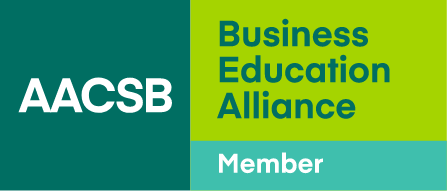Devising Plausible Futures for a Turbulent World
- Climate change, international conflict, COVID-19, and other societal issues mean that all businesses are confronting global realities that will affect their operations and performance.
- To manage these realities effectively, leaders need to engage in constructive discussions in which they test different assumptions about the effects of factors such as technology, geoeconomics, and consumer behaviors.
- By rigorously challenging existing worldviews and assessing different scenarios and strategic options, leaders can devise a range of potential responses that will better prepare them for an uncertain future.
Although many of the biggest firms in Europe have very limited direct exposure to the Russian market, almost all of them have felt the impacts of the ongoing Russia–Ukraine war. According to an article in Financial Times, which examined the annual reports of more than 600 European companies, most of them have experienced “punishing hits to profits,” an increase in prices for energy and raw materials, and significant supply chain disruptions due to the conflict.
That’s only one example of the new global reality confronting enterprises today. The COVID-19 pandemic, climate change, and the trade war between China and the U.S. are among the other major factors that are challenging businesses today, and all of them are unpredictable in their nature, scope, and impact. These deep, successive disruptions are altering the business environment for both international firms and domestic firms that are linked indirectly as suppliers to international markets.
This is a very different business environment than the one that existed in previous decades. The Economist notes that today’s “overstretched CEO” must find “a new approach for a new age” to deal with surging global uncertainty and risk. Many executives already realize this. For instance, a survey of Asian CEOs by McKinsey and the Asia Business Council found that 73 percent of respondents regard global trends to be “strategically critical, suggesting a recalibration of strategy on a broad front.”
As we discussed in a recent article in AACSB Insights and elsewhere, today’s turbulent business world is being shaped by multiple factors: geoeconomics, disruptions across diverse supply chains, the increasing importance and uncertainty of monetary and fiscal policy, and the changing dynamics of financial markets.
It is no longer sufficient for business leaders to rely on the usual methods of risk management, such as assessing political instability in a particular country. These methods do not allow leaders to identify, let alone manage, uncertainties that are interconnected, cross-border, and global in nature. CEOs must formulate strategies that adjust to the new realities of a complex global economy.
To do so, they must be able to reassess existing paradigms and be willing to consider contrarian but equally plausible possible futures for their firms.
Challenging Existing Worldviews
Strategic analysis has two basic purposes. One is to provide early warning of potential changes, anomalies, and inflection points in the business environment that could impact a firm’s performance. Another is to provide new options that could provide a better direction in an alternative future.
In times of turbulence, the mindsets and tools that support strategic decision-making must combine analytics with creativity and must focus on change rather than continuity. But for most leaders, it’s difficult to think creatively about a highly uncertain future. Their thought processes tend to be constrained by past experiences, beliefs, and assumptions, a phenomenon known as “path dependence.”
The usual methods of risk management do not allow leaders to identify, let alone manage, uncertainties that are interconnected, cross-border, and global in nature.
Thinking strategically in a chaotic world requires leaders to be open to and willing to integrate different perspectives gained from diverse sources of information. It requires them to encourage constructive dialogue and debate, explicitly challenge existing worldviews, and test equally plausible strategic options.
Practical tools to support such strategic thinking include scenario planning, rigorous assumptions analysis, and constructive argumentation using the devil’s advocate approach and dialectic inquiry.
Devising Scenarios
CEOs might anticipate very different futures depending on the assumptions they make about the effects of factors such as technology, geoeconomics, market dynamics, and consumer behavior.
Today’s executives must consider questions such as the following: How quickly and effectively will businesses resolve bottlenecks in key supply chains such as the one for semiconductors? How will these bottlenecks be shaped by geoeconomic factors—for example, the U.S.–China rivalry? How will increases in the price of energy and food affect inflation expectations, and how will central banks respond? How will exchange rates, capital flows, financial asset prices, public and private debt, and consumer spending be adjusted in response to higher interest rates? How will the war in Ukraine and related sanctions and countersanctions affect the flows of goods, services, and finance across markets?
When CEOs construct scenarios about potential futures, they incorporate expectations about a disparate range of factors into one integrated picture. They combine different sets of credible assumptions that challenge implicit beliefs and generate new perspectives and possibilities. Their goal is to develop a deep understanding of the forces that are likely to shape the future so they can formulate better strategies to meet it.
They can only develop this understanding if they test out multiple possible outcomes. For instance, they first can consider optimistic scenarios by assuming that environmental forces will evolve in favorable ways that lead to a stronger global economy, which in turn will benefit the firm. But they also should devise pessimistic scenarios by anticipating further disruptions and constraints that could put intensifying pressure on their enterprises. In this way, they can be prepared, despite facing an uncertain future.
Scenarios address the following key questions:
- How robust is our present strategic vision? That is, how will our present strategy and operations perform in a range of possible futures?
- How robust are the different strategic options we are considering in our alternate futures?
- What sort of future do we want for the enterprise, and what do we need to do to realize it?
Analyzing Expectations
In times of uncertainty, it is essential for leaders to go beyond scenario planning to address novel risks related to relevant events, issues, and strategic options. In the process, they will focus attention on the assumptions that are particularly important to the firm and that must hold true if planned responses are to be successful.
Managers must rigorously formulate, closely monitor, and carefully assess their critical assumptions. This enables them to see early warning indicators that signal shifts toward or away from certain kinds of futures and allows them to adjust effectively to new information.
When leaders are explicit about what they anticipate, they can make critical assessments about what might happen as conditions change.
Two examples illustrate the importance of systemic strategic assumptions analysis:
Consumer responses to inflation. When central banks bump up interest rates to combat inflation, customers usually react by spending less. But when the Bank of Canada raised rates last year in an effort to control inflation, households did not cut back as predicted. If business leaders specify how they expect consumer spending to change in reaction to rising interest rates, they will see whether these assumptions hold true in particular product markets—and they can explore the implications for the firm if the predictions prove to be wrong.
Problems with the supply chain. It seems reasonable to assume that shortages of key materials and components in any sector will hurt sales and lower profits. But that wasn’t true in the auto industry in 2021 and 2022. Supply chain challenges, including a shortage of semiconductor chips, led to lower production and sales of cars—but profits were higher than they had been in 2019. Why? Some companies adopted stringent inventory management strategies and passed costs on to customers. By contrast, Tesla rewrote software that could use existing chips.
When leaders are explicit about what they anticipate—when they identify key assumptions—they can make critical assessments about what might happen as conditions change. In this case, they were able to link the availability of auto components to the effects on sales and profits.
Arguing Constructively
Very different reasonable expectations about the same observed reality can yield disparate but equally plausible futures.
For example, business leaders might agree about inflation data, but hold different opinions about how central banks could respond as they try to fight inflation while not constraining economic growth. Furthermore, even if most people assume that central banks are likely to raise interest rates, company leaders might be uncertain about whether this action will lead to significant decreases in the firm’s sales.
Evidence suggests that when company leaders engage in constructive argumentation, they can improve their strategic decision-making during periods of uncertainty. These debates may be effectively designed to take one of two forms.
The devil’s advocate approach involves directly challenging the logic, foundations, and implications of a proposed strategy. By assessing the strategy from a clearly contrary viewpoint, the management team can expose potential weaknesses and information gaps.
For example, team members might question whether higher interest rates will lead to significantly reduced sales, which might cause them to reassess their original assumptions about the effects of inflation on their markets. The objective for such debates is to strengthen the foundations of a strategy, or to modify it to reduce its weaknesses.
To adjust to the new realities of today’s global market, business leaders must revise both the content of their business strategies and the processes and tools they use to formulate their plans.
The dialectical inquiry approach goes a step farther and takes the form of rigorous structured debate between very different, but equally plausible, world views. This requires management teams to develop two detailed and coherent, but divergent, strategies that may agree on basic data but incorporate different assumptions about the data’s implications.
For example, all managers might accept observed data that consumers are showing less loyalty to the firm’s leading products, but different teams might interpret the data according to different sets of assumptions. One group of executives could assume that the change is occurring because competitors are engaging in rapid product innovation; they might propose a strategy of focusing on technology to develop new products. Another group could assume that competitors are using more effective marketing strategies for existing products; they might suggest a creative marketing response.
The aim is for managers to agree on a shared set of observed facts or data, then engage in a structured clash of alternative world views. As they use very different sets of assumptions to interpret data, they will develop fresh, insightful, and robust strategies.
Adjusting to New Realities
Today’s global economy is marked by upheavals that are extensive, interconnected, and unpredictable. International conflicts, volatile prices, unstable supply chains, and geopolitical considerations are reshaping product markets. This is creating profound and continuing uncertainty for enterprises. To adjust to these new realities, business leaders must revise both the content of their business strategies and the processes and tools they use to formulate their plans.
Therefore, as business schools teach strategy and management courses, particularly at the executive level, they must cover concepts and skills that help learners succeed in chaotic times. Certainly, the curriculum should include traditional approaches, such as Michael Porter’s Five Forces model and the resource-based view of competitive advantage. But schools also must teach students to address the following questions:
- How will the firm’s operations be impacted by various novel characteristics of the business environment, such as the increasing role of geonomics in constraining the market forces of particular industries?
- Why does this matter? What practical challenges will arise in specific product markets that will affect the enterprise’s strategy, operations, and performance?
- How can managers navigate this environment of novel risks in ways that blend creativity and analytics? What conceptual frameworks and diverse tools can they use to better understand and respond to the challenges facing their companies?
Business schools must enable students to apply such strategic thinking in diverse organizations and settings. For example, students must have opportunities to practice scenario planning, strategic assumptions analysis, and dialectic inquiry. This will help them become more effective managers in a world of increasing uncertainty, novel risks, and unexpected outcomes. Through such preparation, managers will be able to hone the strategic skills that they’ll most certainly need to successfully navigate a turbulent world.






